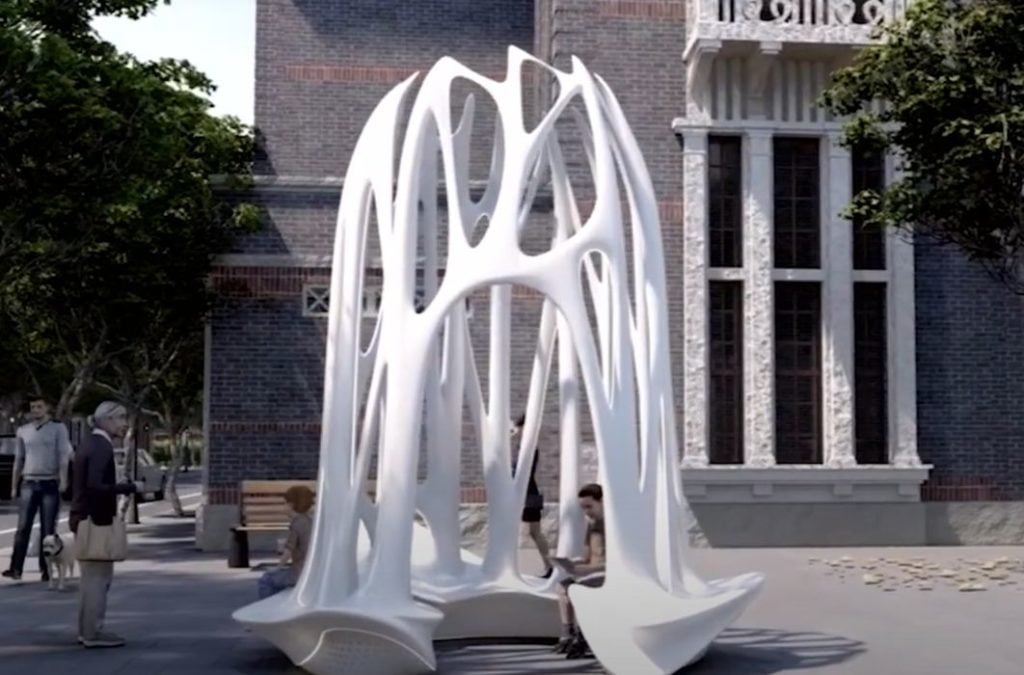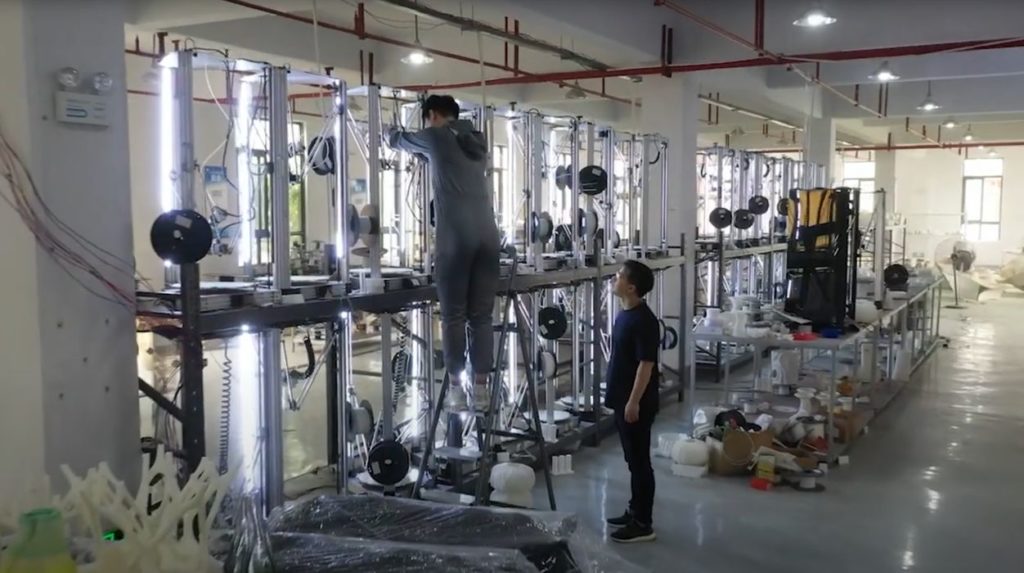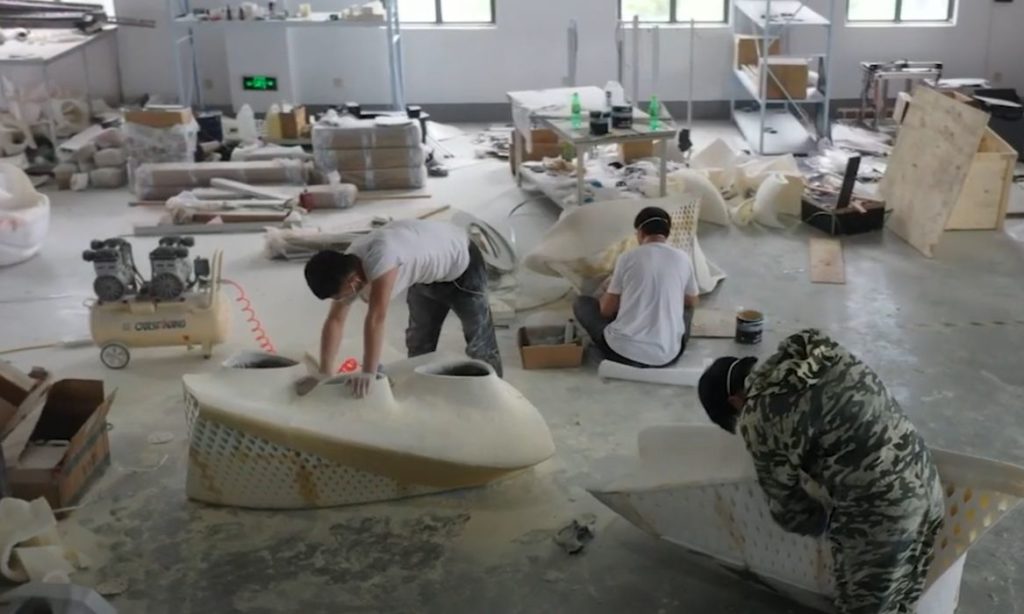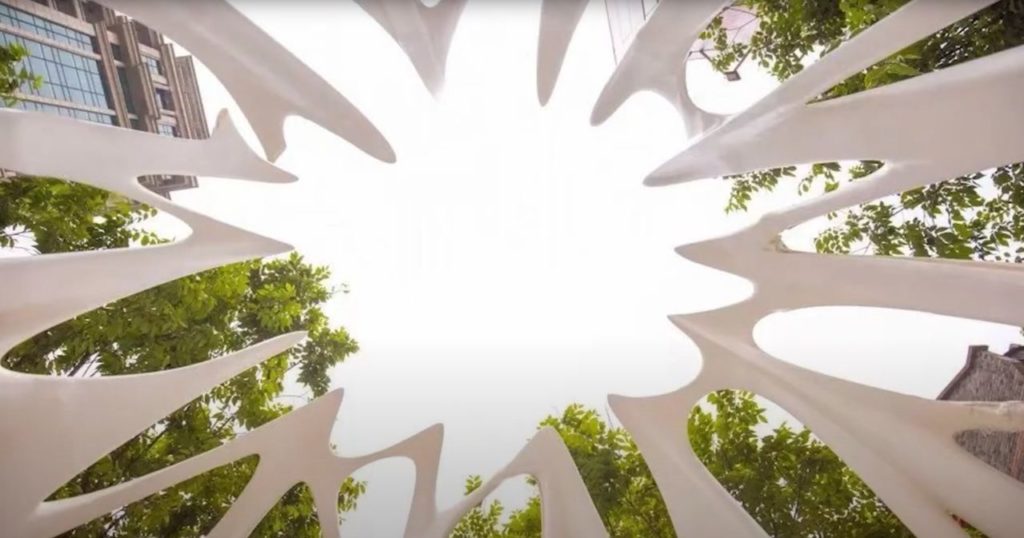
This week’s selection is the Digital Circular Pavilion by studio Spazio Z.
This work is an enormous outdoor sculpture presently on display in Shanghai. It’s entirely 3D printed, which is unusual for objects of this size.
Typically large outdoor prints are made by 3D printing molds into which a more traditional making material is cast. However, that’s not the case here as this item was produced entirely with Polymaker’s L3003, an industrial-level PLA 3D printer filament that can be used for such applications.
Of course there are not a lot of 3D printers available with the necessary build volume to produce this sculpture in a single 3D print job, so the project was segmented into a number of parts and each printed individually.

Here you can see the print farm used by the project, which involves thirty-some large-format delta 3D printers in a two-level array.
The parts produced were post-processed, and then assembled by a team into the final configuration.

Note that the sculpture includes an underlaying aluminum skeleton on which the parts were mounted. This is for strength, as the public sculpture will be subjected to anything passers-by might do to it.
The project demonstrates the capability possible when parallel 3D printing is engaged. In this project, one day of 3D printing on the delta array would be equal to 30 days of 3D printing on a single machine.
It’s not clear how many parts were required to build the sculpture, but with that size of a print farm, it’s likely all parts could have been printed in a single week.
However, post-processing could take considerably longer as that is a largely manual process that cannot easily be sped up.

What is also interesting is that a PLA material from Polymaker was selected. Normally, PLA is considered a “weak” material and more stressful applications turn to more robust materials. However, it seems that Polymaker’s industrial-quality PLA was deemed sufficient for this application.
Via YouTube
